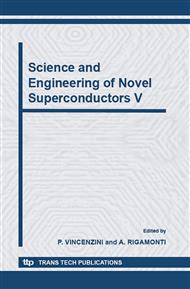p.180
p.188
p.195
p.204
p.212
p.220
p.228
p.238
p.246
Long Length MgB2 Conductors for Industrial Applications
Abstract:
In spite of the relatively short time dedicated to the development of MgB2 conductors since its discovery in 2001, a remarkable progress has been already achieved in terms of critical current density, homogeneity of the conductors and reproducibility of the results over long lengths. Unlike other HTS and LTS materials, MgB2 conductor processing is more open to a number of improvements and modifications that help in making it more attractive for several DC and AC applications. Up to now our work has been focused on the improvement of the production capacity in order to allow for the assembly of large prototype magnets to test the capability of MgB2 to maintain the present level of performance over very long lengths. Long MgB2 tapes of about 1600 m with superconducting and mechanical properties suitable for making low field magnets are already available. Presently we are focusing on the enhancement of the irreversibility field. This would open the possibility of using MgB2 also for high field applications.
Info:
Periodical:
Pages:
238-245
Citation:
Online since:
October 2006
Keywords:
Price:
Сopyright:
© 2006 Trans Tech Publications Ltd. All Rights Reserved
Share:
Citation:


